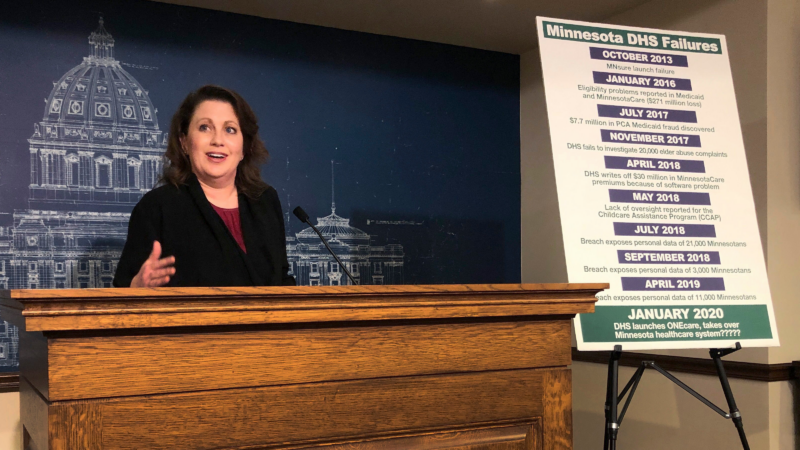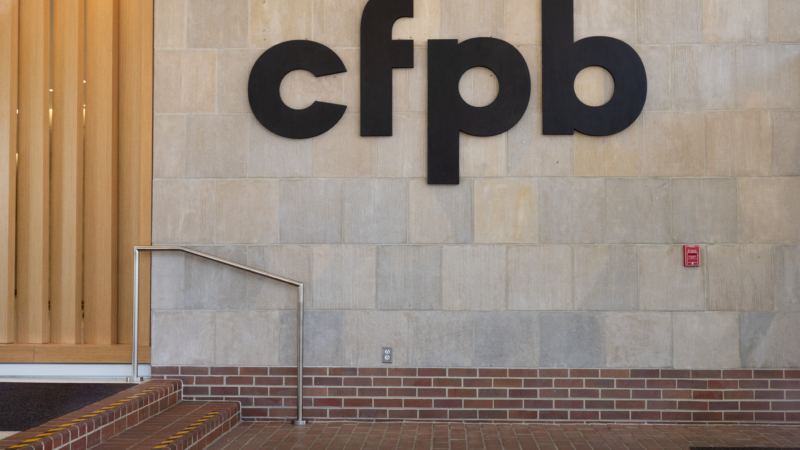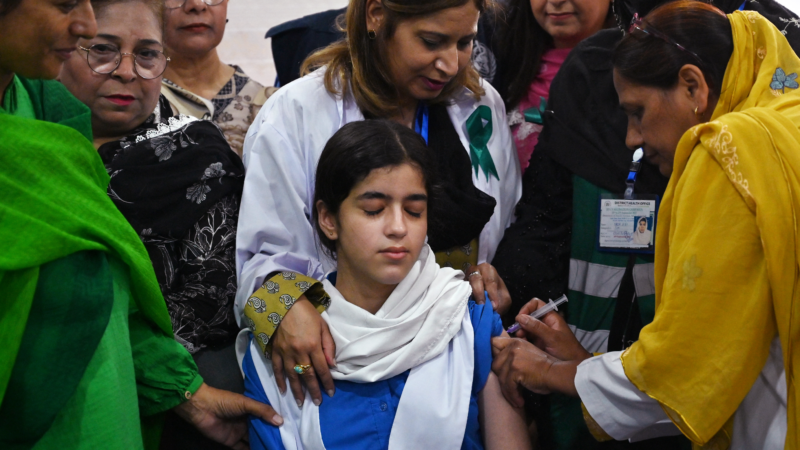Murders are down nationwide. Researchers point to a key reason
The number of homicides is falling dramatically nationwide.
In 2024, murders fell by at least 14% across the U.S., according to analyses by the data firm AH Datalytics and the Council on Criminal Justice, a nonpartisan think tank. Official data from the FBI goes only through 2023 but shows similar drops. Early analyses from AH Datalytics suggest the drop will be even bigger in 2025.
In Detroit, for instance, city officials say the number of homicides is at its lowest since 1965, and Police Chief Todd Bettison says that has led to a huge difference for his officers.
“They’re not drinking from a fire hose,” he says.
City officials around the country often point to policing as a key component of why crime falls, highlighting how many officers a city has or how they’re being deployed. That can play an important role, but crime analysts say the reasons behind these drops are more complex and broader.
Jeff Asher, co-founder of AH Datalytics, says the number of crimes typically rises or falls by only a few percentage points each year: “You think about a really large ship — it doesn’t turn fast,” he says. “These things don’t change fast.”
And yet they have — despite fewer police officers nationwide now than before the COVID-19 pandemic. Graphs of the number of murders over the last five years look like a roller coaster hill: After a surge of violence in 2020 and 2021, the trend line has fallen over the last three years.
“We’re seeing really not just declines, but large declines and large across-the-board declines. I mean, it’s everywhere,” Asher says.
Researchers who study crime caution that no one thing causes violence to rise or fall, but Asher and other crime analysts have zeroed in on what they say is a primary driver of the rise and subsequent decline: the COVID-19 pandemic.
John Roman, who directs the Center on Public Safety & Justice at NORC, a research group at the University of Chicago, said they wanted to figure out why crime rose and then fell in recent years.
“The only thing that happened in America during this period that is of that same scale is the pandemic. And what the pandemic really did was it changed how you spend your day, what you do.”
All of a sudden, there were a lot of young people — who are more likely to commit crimes than older people — at home, with little to do. And, Roman says, a vital support system was ripped away: public services. Between March and May of 2020, the country’s local government workforce shrank by nearly 10%.
“They’re the biggest employer of teachers. They employ coaches and counselors and aides and all the people that young people connect with,” Roman says. “They employ physical health, mental health, behavioral health providers, and they fund all the local programming in the area. They fund your community center.”
Five years after the start of the pandemic, local government employment is finally back at pre-pandemic levels. Municipalities are also bringing in more money, and their spending has rebounded as well. That means many services are coming back — and with them, places where young people can find support.
“We’re spending money on stuff, and when stuff is nicer, people have places to go. It creates jobs,” Asher says. “It creates environments where people are hanging out. It’s not the broken-windows concept of ‘we need to arrest people for graffiti,’ but it’s more like the kind of idealized version of broken windows that, ‘if we make things nice and people are around it, it provides a means of interrupting cycles of violence.”
In Detroit, Police Chief Bettison credits some of the murder decline there to changes in policing techniques and to higher officer staffing levels. But he also sees things more holistically.
“It is not one thing that drives violence. And so we are always consistently looking for the root causes,” he says.
Two years ago, the city invested $10 million in six community organizations. Each group was assigned a section of the city. Their goal was to reduce violence in that area using what is known as community violence intervention.
Negus Vu is the executive director of one of those groups, the Detroit People’s Community, which is also known as The People’s Action. The essential element to the group’s work, Vu says, is building relationships with young people who may be at risk of committing violence.
“You have outreach workers who have lived, shared experiences that are the ones who establish these relationships,” he says. “And because these relationships are genuine and sincere, they’re able to refer them to get wraparound services such as substance abuse, job referrals, therapy.”
If you meet people’s needs, he says, they’re less likely to turn to violence.
A year after the program started, all six groups had seen fewer shootings and homicides in their zones than the citywide average.
“The numbers are there. We’ve shown collectively that what we’re doing is impactful, effective and is saving lives,” Vu says.
Their funding, though, came from the American Rescue Plan Act, the stimulus bill passed in 2021. That money will go away at the end of this summer. The city is funding the program through next summer.
City officials are now pushing for the state to enact a Public Safety Trust Fund, which would fully fund and expand the program. That bill is making its way through the Michigan Legislature.
Transcript:
AILSA CHANG, HOST:
Murder numbers are falling dramatically in the U.S. after a surge in 2020 and 2021. City officials often point to policing as a key reason, and that can play an important role, but crime analysts say there’s more to it. NPR criminal justice reporter Meg Anderson reports.
MEG ANDERSON, BYLINE: When murders decrease, the police are often the first to take note. In Detroit, city officials say homicides are the lowest they’ve been since 1965. Police Chief Todd Bettison says he’s seen a huge difference in officer wellbeing.
TODD BETTISON: They’re not drinking from a fire hose – if you can imagine trying to get a drink of water from a fire hose, with all that water coming in.
ANDERSON: Detroit is not alone. The number of murders is plummeting nationwide. In 2024, murders fell at least 14% across the country. That’s according to the data firm AH Datalytics and other think tanks. Official FBI data only goes through 2023, but shows similar drops. And early data from AH Datalytics suggests the drop could be even bigger in 2025.
JEFF ASHER: We’re seeing really not just declines, but large declines and large across-the-board declines. I mean, it’s everywhere.
ANDERSON: Jeff Asher is co-founder of AH Datalytics. Generally, he says, crime goes up and down by only a few percentage points each year.
ASHER: You think about a really large ship – it doesn’t turn fast. These things don’t change fast.
ANDERSON: And yet, they have. Asher and other analysts have zeroed in on an explanation – COVID. All of a sudden, you had a lot of young people, who are more likely to commit crimes than older people, at home with nothing to do. And a vital support system got ripped away – public services. Between March and May of 2020, the country’s local government workforce shrank by nearly 10%.
JOHN ROMAN: They’re the biggest employer of teachers. They employ coaches and counselors and aides and all the people that young people connect with.
ANDERSON: John Roman is with NORC, a research group at the University of Chicago.
ROMAN: They employ physical health, mental health, behavioral health providers. And they fund all the local programming in the area.
ANDERSON: Five years later, local government employment is finally back at pre-pandemic levels. Municipalities are bringing in more money, and their spending has gone up, too. That means many services are coming back, and with them, places where young people can find support. In Detroit, Police Chief Bettison credits some of the city’s murder decline to changes in policing techniques and higher officer staffing levels. But he also sees it as a citywide team effort.
BETTISON: It’s not one thing that drives violence, and so we are always consistently looking for the root causes.
ANDERSON: Two years ago, the city invested $10 million in six community organizations. Each group was assigned a section of the city. Their goal was to reduce violence in that area. Negus Vu leads one of those groups. He says their staff focuses on building relationships with young people.
NEGUS VU: And because these relationships are genuine and sincere, they’re able to refer them to get wraparound services such as substance abuse, job referrals, therapy.
ANDERSON: If you meet people’s needs, he says, they’re less likely to turn to violence. A year after the initiative started, all six groups had seen fewer shootings and homicides in their regions than the citywide average.
VU: We’ve shown collectively that what we’re doing is impactful, effective and is saving lives.
ANDERSON: But their funding came from the American Rescue Plan Act – the stimulus bill passed in 2021. That money will go away at the end of this summer. The city is funding the program through next summer and pushing the state to enact a public safety trust fund to fully fund the work.
Meg Anderson, NPR News.
(SOUNDBITE OF MUSIC)
Trump administration says it’s freezing child care funds to Minnesota
President Trump's administration announced that it's freezing child care funds to Minnesota after a series of fraud schemes in recent years.
Flu cases are surging and rates will likely get worse, new CDC data shows
Flu season is off to a rough start this year, according to new CDC data. The virus is spreading faster than in previous years and the surge is likely to get worse. Here's what you need to know.
10 passion projects that stood out at the movies this year
NPR critic Bob Mondello narrows down his favorite movies of the year — the ones that made audiences vibrate.
Judge orders Trump administration to continue to seek funding for the CFPB
The order is the latest in a complex legal battle over the fate of the Consumer Financial Protection Bureau, a watchdog agency.
In a year of steep challenges, there were still shining moments in global health
The Trump administration's deep cuts in U.S. foreign health aid had a devastating impact. Yet there were achievements of note in spite of it all.
An escalation in Yemen threatens to reignite civil war and widen tensions in the Gulf
Saudi Arabia bombed Yemen's port city of Mukalla, targeting a shipment of weapons from the United Arab Emirates for separatist forces. The UAE later said it would withdraw its forces from Yemen.








